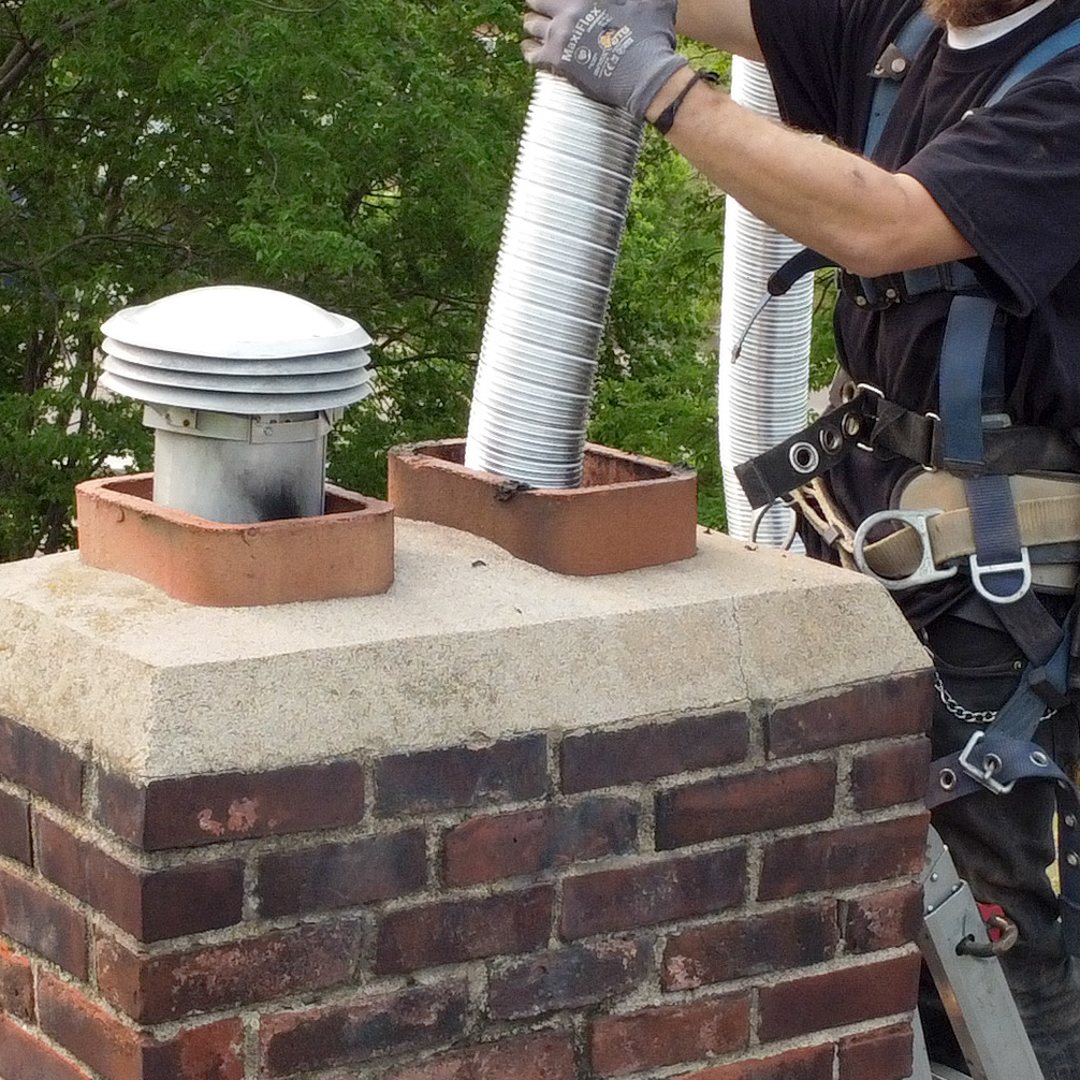Why use stainless steel for a chimney liner?
There are many types of chimney liners available on the market. Clay tile, aluminum, and stainless steel are just a few. Smoke Stacks installs Milwaukee and Waukesha stainless steel chimney liners because they are the industry standard for relining chimneys. Stainless steel is very durable and can resist the corrosive flue gases emitted by home heating appliances. All of the stainless steel flue liners that Smoke Stacks, Inc. uses come with a lifetime manufacturer warranty.
Reasons for Installing a Chimney Liner
Proper Sizing
It is important to note that proper sizing of your Milwaukee chimney liner is critical for the chimney to draft correctly. If a liner is too small, the chimney cannot draft enough of the flue gases fast enough. If the liner is too big, moisture and flue gases can condense before they leave the chimney. This is a common cause of deteriorated chimneys and stubborn leaks in the house.
For example, the image on the right with the water heater and 8x8 flue tile as listed, the water heater only uses approximately 7 square inches of the available flue volume. The flue volume is approximately 56 square inches. When the water heater is running, the moisture that is produced by burning gas will condense in the flue and eventually damage the tiles, mortar, and chimney exterior.

Damaged Flue Tile Liners
Over time, the clay flue liner tiles can soften, deteriorate, spall, and crack due to excessive acid, moisture, and heat. The exhaust from burning wood, gas, oil, and coal all contain compounds that when mixed with water, result in an acidic mist or paste inside the chimney. This acid essentially eats the chimney apart from the inside out.
Sometimes, chimneys can experience thermal shock or a chimney fire that will rapidly expand a cold flue. When the flue tiles expand too quickly or unevenly, the tiles can crack, leading to a reduction in draft and/or allowing soot to build up in areas of the chimney that are not designed to contain it.
Unlined Chimneys
Many chimneys built prior to 1910 do not have liner tiles. The interiors were parged with mortar to provide a smooth surface for the exhaust to flow. Over time, that mortar softens and will often dissolve into sand and/or fall off of the brick itself. This can lead to a dangerous heat transfer to other areas of your home around the chimney.

Shifted Flue Tile Liners
Many chimneys have flue liners that were mortared together with a standard mortar. Again, this mortar can dissolve and allow the individual tiles to shift and move. Shifting tiles can impede draft, open gaps into the interior of the chimney, or possibly even collapse.
Safety Information About Chimneys
Chimneys are an integral part of many homes. It is the chimney's responsibility to vent the hazardous gases that are created by your home heating appliance. It is of the utmost importance that your chimney is working correctly to ensure the safety of your family.
Many chimney problems, such as holes and cracks, in the masonry of the chimney go unnoticed until there is a problem that is very noticeable. Chimney problems can cause your heating furnace to stop working properly, fireplace smoke to come back into your house, or water to come through your ceiling or walls. If you have not had a Milwaukee or Waukesha chimney inspection in a while, call Smoke Stacks today to make sure your Milwaukee chimney is not hiding danger in your home!




